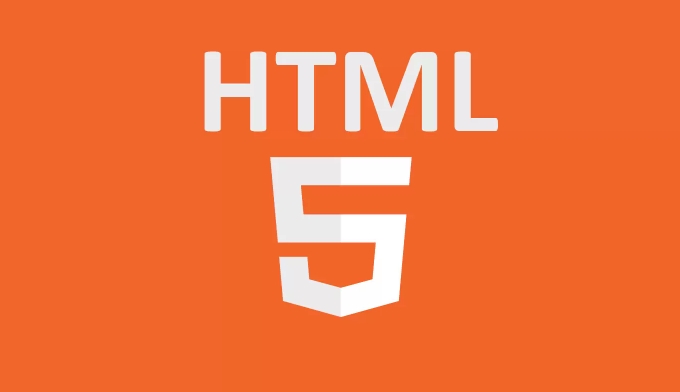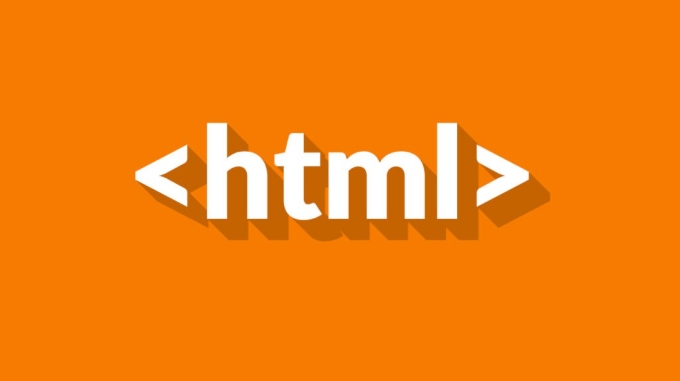What is the purpose of the lang attribute in the HTML tag?
Jul 07, 2025 am 02:23 AMThe lang attribute in HTML specifies the language of content, aiding accessibility and SEO. 1. Screen readers use it to apply correct pronunciation rules for different languages. 2. It improves accessibility by ensuring proper speech output for visually impaired users. 3. It supports accurate language detection across multilingual page sections. 4. Search engines use it to determine content language, improving regional search visibility. 5. It helps crawlers index multilingual sites and avoid duplicate content issues with hreflang. 6. Apply it to the tag or specific elements like or when multiple languages are present. 7. Common language codes include en, es, de, ja, and zh. 8. Use it on quotes or phrases in foreign languages to ensure correct interpretation by tools.

The lang attribute in an HTML tag is used to declare the language of the content within that element. This helps browsers, search engines, and assistive technologies understand what language the page or a part of the page is written in.

Why It Matters for Accessibility
Screen readers use the lang attribute to switch pronunciation rules based on the declared language. For example, if a paragraph is marked as Spanish (es), a screen reader might switch to its Spanish voice to read it correctly. Without this, the user could hear mispronounced words or confusing speech patterns.

- Helps screen readers pronounce text properly
- Improves accessibility for users with visual impairments
- Supports better language detection across different parts of a page
How It Affects SEO
Search engines like Google also use the lang attribute to determine the language of your content, which can influence how your site appears in regional search results. While it's not the only way search engines detect language, it gives a clear signal that can help with targeting the right audience.
- Can improve regional visibility in search results
- Makes it easier for crawlers to index multilingual sites
- Helps avoid duplicate content issues when using hreflang
How to Use It Properly
You should add the lang attribute to the tag at the very least, but you can also apply it to individual elements if your page contains multiple languages.

Basic usage:
<html lang="en">
Multilingual example:
<p>I'm learning <span lang="fr">fran?ais</span> online.</p>
Some common language codes:
en– Englishes– Spanishde– Germanja– Japanesezh– Chinese
When to Use It Beyond the HTML Tag
If your page includes quotes, phrases, or sections in another language, applying the lang attribute to those specific elements ensures tools interpret them correctly.
For example:
<q lang="de">Guten Morgen</q>
This tells browsers and screen readers that the quote is in German, even if the rest of the page is in English.
That’s basically how the lang attribute works — small but meaningful in accessibility and language handling.
The above is the detailed content of What is the purpose of the lang attribute in the HTML tag?. For more information, please follow other related articles on the PHP Chinese website!

Hot AI Tools

Undress AI Tool
Undress images for free

Undresser.AI Undress
AI-powered app for creating realistic nude photos

AI Clothes Remover
Online AI tool for removing clothes from photos.

Clothoff.io
AI clothes remover

Video Face Swap
Swap faces in any video effortlessly with our completely free AI face swap tool!

Hot Article

Hot Tools

Notepad++7.3.1
Easy-to-use and free code editor

SublimeText3 Chinese version
Chinese version, very easy to use

Zend Studio 13.0.1
Powerful PHP integrated development environment

Dreamweaver CS6
Visual web development tools

SublimeText3 Mac version
God-level code editing software (SublimeText3)

Hot Topics
 Explain the purpose of the role attribute in ARIA.
Jun 14, 2025 am 12:35 AM
Explain the purpose of the role attribute in ARIA.
Jun 14, 2025 am 12:35 AM
ARIA's role attribute is used to define the role of web elements and improve accessibility. 1. Role attribute helps assistive technology to understand the functions of elements, such as buttons, navigation, etc. 2. Use role attributes to assign specific roles to non-semantic HTML elements. 3. The role attribute should be consistent with the element behavior and be verified by the accessibility tool test.
 HTML and Design: Creating the Visual Layout of Websites
Jun 14, 2025 am 12:39 AM
HTML and Design: Creating the Visual Layout of Websites
Jun 14, 2025 am 12:39 AM
How to create a website layout? 1. Use HTML tags to define the content structure, such as, ,. 2. Control styles and positions through CSS, using box model, float or Flexbox layout. 3. Optimize performance, reduce HTTP requests, use cache and optimize images, and ensure responsive design.
 How can you ensure your HTML code is readable and maintainable?
Jun 10, 2025 am 12:06 AM
How can you ensure your HTML code is readable and maintainable?
Jun 10, 2025 am 12:06 AM
Improve the readability and maintainability of HTML code can be achieved through the following steps: 1. Use semantic tags, such as, etc. to make the code structure clear and improve SEO effect; 2. Keep the code formatted and use consistent indentation and spaces; 3. Add appropriate comments to explain the code intention; 4. Avoid excessive nesting and simplify the structure; 5. Use external style sheets and scripts to keep the HTML concise.
 How do I stay up-to-date with the latest HTML standards and best practices?
Jun 20, 2025 am 08:33 AM
How do I stay up-to-date with the latest HTML standards and best practices?
Jun 20, 2025 am 08:33 AM
The key to keep up with HTML standards and best practices is to do it intentionally rather than follow it blindly. First, follow the summary or update logs of official sources such as WHATWG and W3C, understand new tags (such as) and attributes, and use them as references to solve difficult problems; second, subscribe to trusted web development newsletters and blogs, spend 10-15 minutes a week to browse updates, focus on actual use cases rather than just collecting articles; second, use developer tools and linters such as HTMLHint to optimize the code structure through instant feedback; finally, interact with the developer community, share experiences and learn other people's practical skills, so as to continuously improve HTML skills.
 How do I use the element to represent the main content of a document?
Jun 19, 2025 pm 11:09 PM
How do I use the element to represent the main content of a document?
Jun 19, 2025 pm 11:09 PM
The reason for using tags is to improve the semantic structure and accessibility of web pages, make it easier for screen readers and search engines to understand page content, and allow users to quickly jump to core content. Here are the key points: 1. Each page should contain only one element; 2. It should not include content that is repeated across pages (such as sidebars or footers); 3. It can be used in conjunction with ARIA properties to enhance accessibility. Usually located after and before, it is used to wrap unique page content, such as articles, forms or product details, and should be avoided in, or in; to improve accessibility, aria-labeledby or aria-label can be used to clearly identify parts.
 How do I create a basic HTML document?
Jun 19, 2025 pm 11:01 PM
How do I create a basic HTML document?
Jun 19, 2025 pm 11:01 PM
To create a basic HTML document, you first need to understand its basic structure and write code in a standard format. 1. Use the declaration document type at the beginning; 2. Use the tag to wrap the entire content; 3. Include and two main parts in it, which are used to store metadata such as titles, style sheet links, etc., and include user-visible content such as titles, paragraphs, pictures and links; 4. Save the file in .html format and open the viewing effect in the browser; 5. Then you can gradually add more elements to enrich the page content. Follow these steps to quickly build a basic web page.
 What is an HTML tag?
Jun 13, 2025 am 12:36 AM
What is an HTML tag?
Jun 13, 2025 am 12:36 AM
HTMLtagsareessentialforstructuringwebpages.Theydefinecontentandlayoutusinganglebrackets,ofteninpairslikeand,withsomebeingself-closinglike.HTMLtagsarecrucialforcreatingstructured,accessible,andSEO-friendlywebpages.
 How do I create checkboxes in HTML using the element?
Jun 19, 2025 pm 11:41 PM
How do I create checkboxes in HTML using the element?
Jun 19, 2025 pm 11:41 PM
To create an HTML checkbox, use the type attribute to set the element of the checkbox. 1. The basic structure includes id, name and label tags to ensure that clicking text can switch options; 2. Multiple related check boxes should use the same name but different values, and wrap them with fieldset to improve accessibility; 3. Hide native controls when customizing styles and use CSS to design alternative elements while maintaining the complete functions; 4. Ensure availability, pair labels, support keyboard navigation, and avoid relying on only visual prompts. The above steps can help developers correctly implement checkbox components that have both functional and aesthetics.






